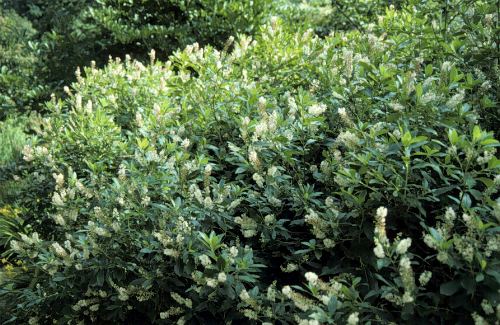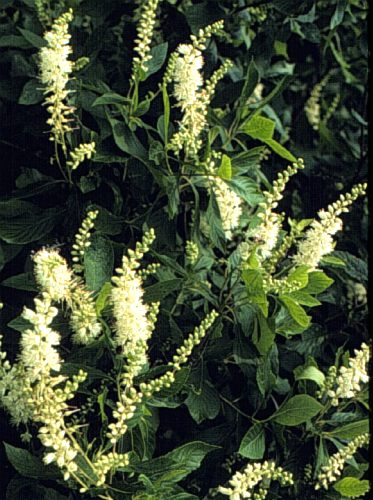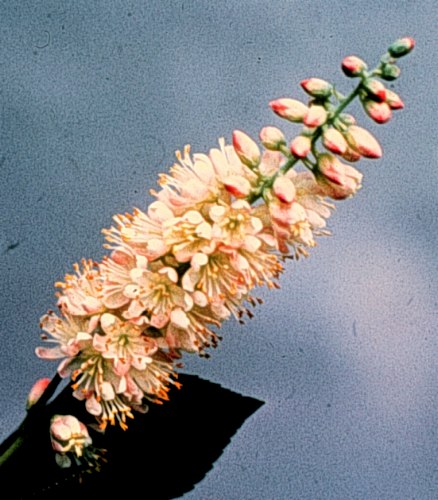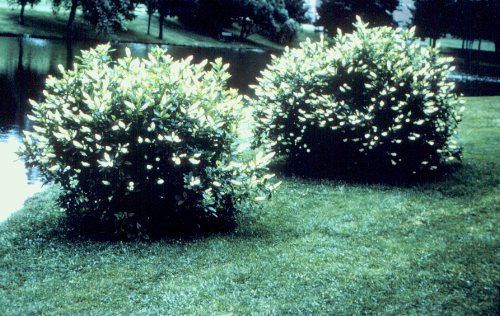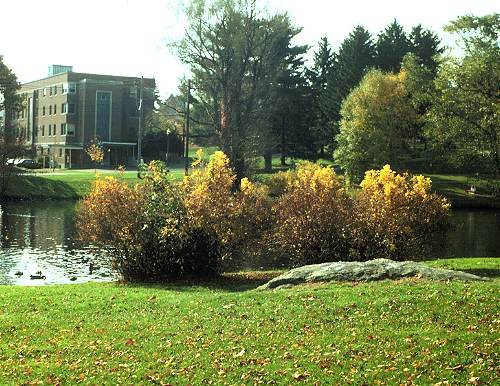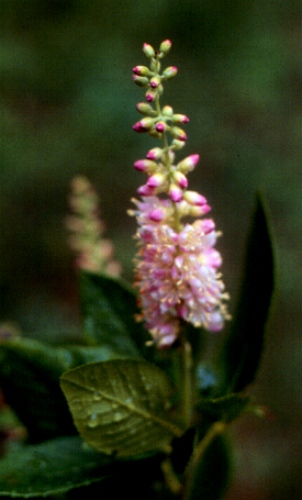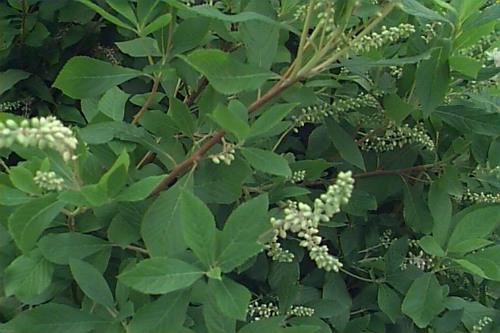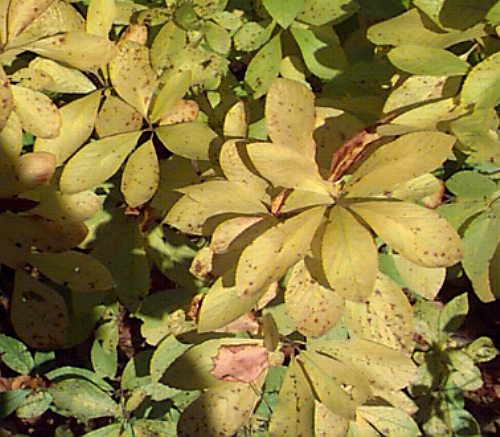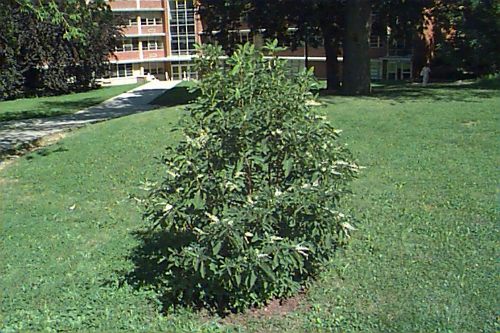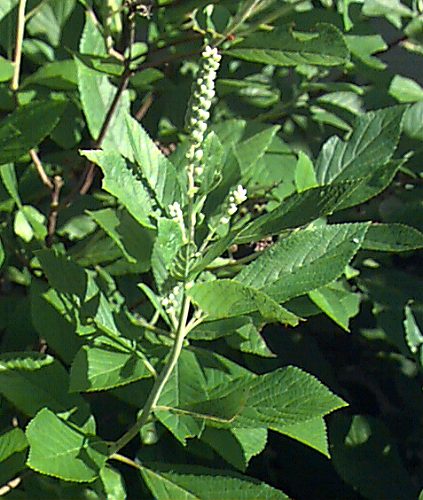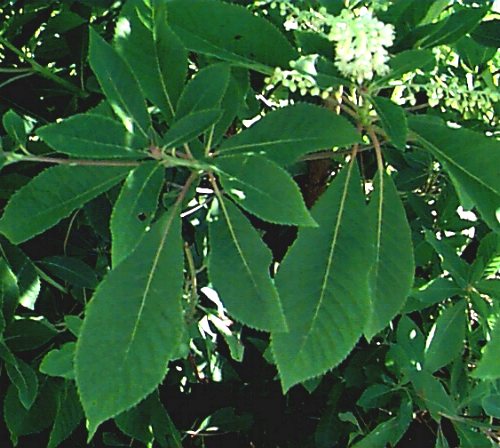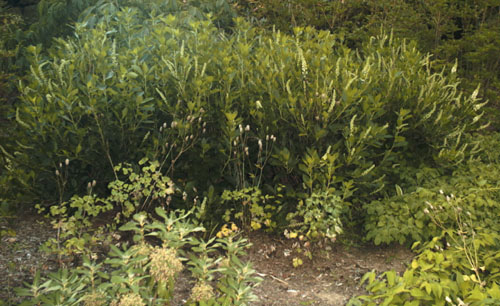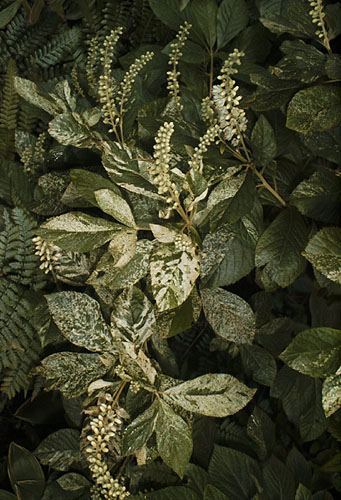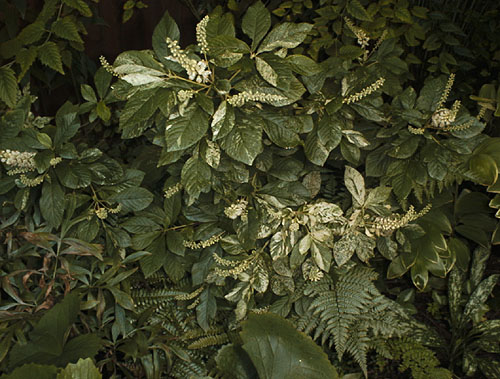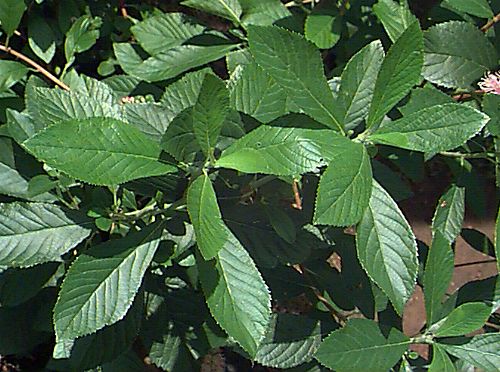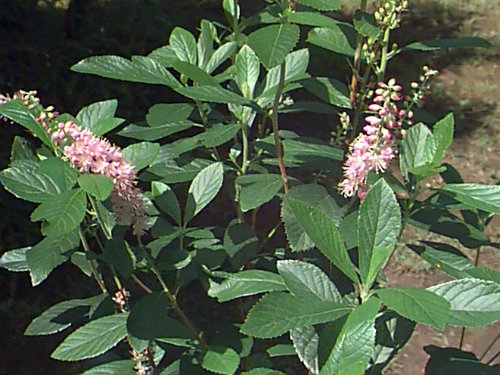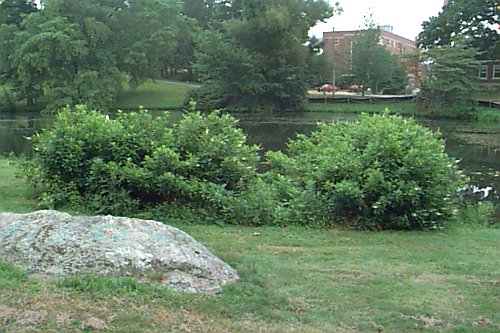Clethra alnifolia
Summersweet, Sweet Pepperbush
Clethraceae
ExpandHabitat
- native along the entire eastern United States
- most commonly founded in moist woodlands, especially near water
- zone 4
Habit and Form
- an upright deciduous shrub
- 5' to 8' tall and 4' to 6' wide
- multistemmed and suckering; can form colonies
- sometimes with little foliage at the base of plants in shady locations
- dense foliage in exposed locations
- rounded to oval shape
Summer Foliage
- alternate, deciduous leaves
- 1.5" to 4" long and 1" to 2" wide
- obovate shape with acute to accuminate tip
- serrate leaf margins
- green to dark green color
- late to leaf out in spring
Autumn Foliage
- yellow-green to golden brown
- can be showy at times
Flowers
- numerous, small white flowers held in racemes.
- racemes are 3" to 5" long and 0.75" wide
- nicely fragrant
- blooms in July and August
- blooms on current seasons growth
- showy
Fruit
- small capsules
- turn brown in fall and persist for a year or two
Bark
- brown on newer stems
- gray brown on older stems
Culture
- prefers moist, acidic soil with organic matter
- transplant from container or B&B
- may be slow to establish and some twig tip dieback may occur during the first winter.
- relatively easy to grow
- full sun to partial shade
- avoid hot, dry sites
Landscape Use
- screen
- specimen perhaps
- in groupings
- shrub border
- colonizing nature can be useful
- highly useful for late summer fragrant flowers
- site the plant so fragrance can be appreciated
- tolerant of ocean-side plantings
- naturalistic/native landscapes
Liabilities
- relatively pest free except for spider mites
- spider mites can be severe on plants in hot, dry locations
ID Features
- fragrant spires of white flowers in mid to late summer
- persistent fruit capsules
- obovate, alternate, deciduous leaves with serrations
- suckering, colonial type growth
Propagation
- by seed
- easily rooted by summer cuttings
- division of suckers
Cultivars/Varieties
'Anne Bidwell' - Produces flowers that are larger than the species, also perhaps later. More compact, to 6' tall.
'Creels Calico' - The foliage of this selection is marked with variable creamy white variegation. The flowers are white, and the plant will probably mature at 4' tall. It's a rather interesting form.
'Hummingbird' - Perhaps the most popular commercial selection. Selected by Callaway Gardens for its compact growth, heavy flowering and shiny foliage. The plant matures at 3'-4' tall and has good fall color. Reports indicate good performance across a wide geographical range.
'Paniculata' - Purported to have large panicles of flowers, but the plant may be misnamed and not reliable in this floral performance.
'Pink Spires' - Buds are rose-colored and open to light pink. Flowers do not fade, and the plant grows to 8' tall.
'Rosea' - Pink flower buds open pink, but then fade to nearly white. An older cultivar.
'Ruby Spice' - The darkest pink selection. Red buds open to pink and do not fade. Dark green, glossy foliage. Selected by Andy Brand at Broken Arrow Nursery in Hamden, CT. This award-winning plant has been embraced by the nursery industry and is very common.
'September Beauty' - A new form that is reported to flower up to two weeks later than the species. Growth is more compact and the foliage is a good green.
